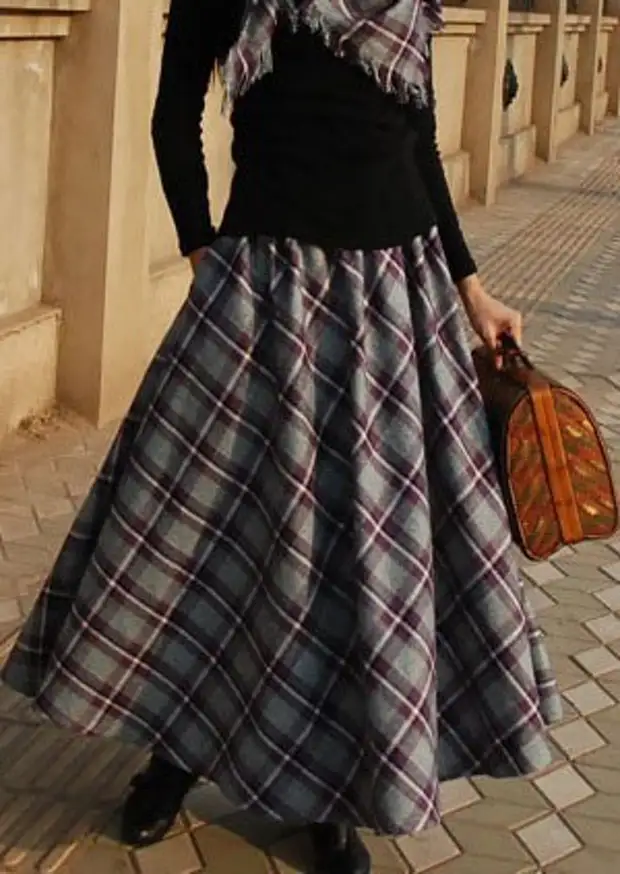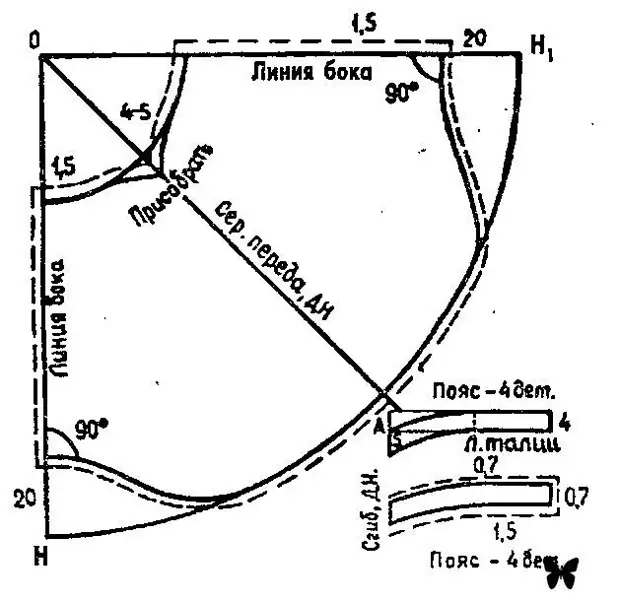A half skirt will suit any woman. The pattern of a semi-half skirt on a rubber band is very simple, it will not be easy to sew it, and you will like the result. Skirts in the form of a half is spectacular and always look very beautiful, they never come out of fashion.

If you are first engaged in cutter, then prepare a centimeter, chalk, paper on which you will draw the pattern of the sevenfold skirt on the rubber band.
The skirt has a very profitable style and looks good on any figure.The cloth for a semidz skirt is better to choose a light, flowing.
How to make a pattern for a semidzer skirt
The pattern of the half skirt is built according to the figure, so measure the waist circle and determine which length of the skirt you want.
Draw a straight angle in one corner of the paper from the top of the angle at point A. From the point and set aside to the right horizontally, the part of the waist circle plus 4 cm. The battery is taken for all sizes. Put the mark on this point A1. Now from point A1, postpone the length of the skirt.
From the point and up vertical, set aside the same measure of the ¼ part of the waist circle plus 4 cm. Denote by the point A2. From point A2, postpone the length of the skirt.
From the point A along the bisector of the angle, the part of the waist circle plus 4 cm, we put the point A3 and from point A3 again lay the length of the skirt again.
Connect the points A1, A2 and A3 smooth line. The bottom of the skirt also connect the smooth line.
Drawing patterns ready. Cut out the pattern, transfer it to a dense paper and cut two such patterns from thick paper. Now you can lay patterns on the fabric. Pekal lay on the fabric as it were in mirror reflection. With this variant, the skirt will have two seams. If you fold the cloth in half and put only one mold so that one side seam comes from a fold of the fabric, then the skirt will have one seam.

Source ➝
